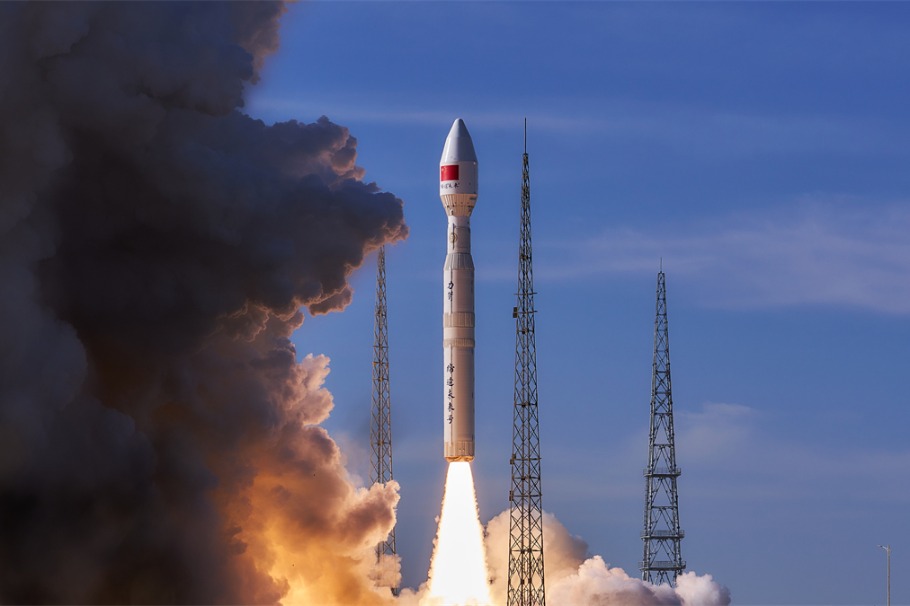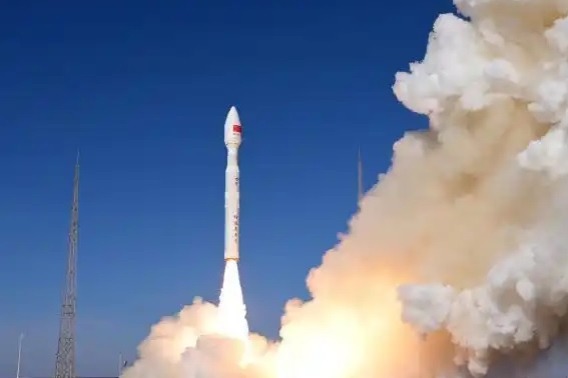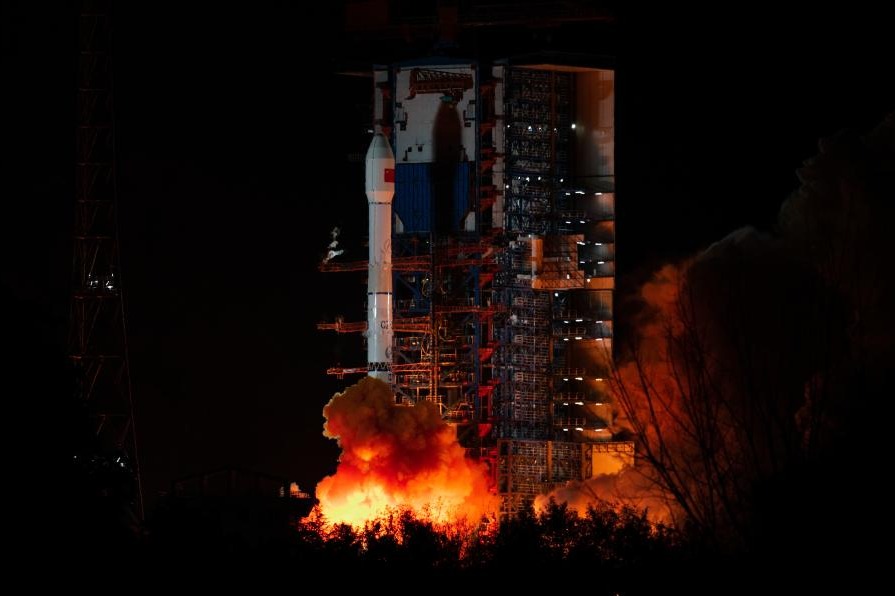Greening projects boost Inner Mongolia


Environmental improvements in the nation's first autonomous region are resulting in higher incomes and better living conditions
Last summer, Zhang Long drove from Beijing to the Arxan National Forest Park in the Inner Mongolia autonomous region.
He didn't expect to see anything more impressive than the region's beautiful natural scenery-mountains, forests and lakes with sheep and cattle ambling on the grassland that stretches to the horizon.
However, during a two-day stopover in Ulaanhot, capital of the region's Hinggan League where the park is located, the 32-year-old was surprised to find some "red sites", or famous relics of revolutionary times.
One of them, the hall of an old military school, attracted him most.
At the hall, now known officially as the May 1 Meeting Site, he learned that before 1947, Ulaanhot was known as King's Temple Street as it had been the site of a temple dedicated to the league's ruler since the 1690s.
In 1947, the first session of the autonomous region's People's Congress was held in the street under the leadership of the Communist Party of China. A total of 393 deputies from several ethnic groups rode horses and bullock carts or walked to gather in the hall.
On April 27 that year, a declaration was made during the congress that the Inner Mongolia autonomous region would be established on May 1. It was the country's first such entity and was established even before People's Republic of China was founded on Oct 1, 1949.
The hall was later recorded as the May 1 Meeting Site and King's Temple Street changed its name to Ulaanhot in November 1947.
"I didn't know the establishment of the Inner Mongolia autonomous region had come before the founding of the PRC. Visiting this and other historical sites really made my trip meaningful," Zhang said.
Development
In the Hinggan League Museum, he examined photos taken in the 1940s in which Ulaanhot had just one muddy road and a population of no more than 58,000.
"But look at the city today. With a population of 360,000, it is connected to the country's biggest cities by air and high-speed trail. The city's development is unbelievable and almost magical," he said.
In addition to experiencing the "red spirit" on his trip, Zhang was impressed by the region's environment, especially the greenery of Hinggan.
In 2017, a vegetation restoration project was initiated in Ulaanhot, and one of the city's biggest abandoned mines was transformed into an ecotourism center that covers 400 hectares.
Wang Zhewen, a local resident who is a sanitation worker at the center, said the area was once just a bare mountain where sand spread across the land frequently because the lack of vegetation meant there were no roots to anchor the topsoil.
"In heavy rains, rocks and mud rolled and slid from the mountain top onto nearby roads, holding up the traffic," he said. "It was an awful sight."
During the past decade, the local government has made many efforts to improve the environment. The abandoned mine is part of a model greening project and has become a popular tourist site that is attracting a growing number of visitors.
The project has created more job opportunities. Wang is one of those who has benefited from the greening efforts, earning an annual income of 30,000 yuan ($4,672).
Similar stories can be heard in other places across the league. In Arxan city, many locals who were once loggers in the forest now make a living by working as rangers or by running family inns.
After a logging ban came into force in the Arxan Mountains in 2012, Zhao Guiying quit her job as a logger.
Now, her family inn brings annual income of about 100,000 yuan, thanks to the booming eco-tourism industry.
"In addition to domestic travellers, I have served many foreign visitors every year," the 50-year-old said.
Many tourists were deeply impressed by the park's natural scenery and even called it 'China's mini-Switzerland'."
Accelerated measures
Last year, Hinggan was granted the title of "National Ecological Civilization Construction Demonstration League" by the Ministry of Ecology and Environment, the first league in Inner Mongolia to be given such an award.
The league has prioritized the environment and accelerated its moves towards high-quality green development via the philosophy expounded by President Xi Jinping that "lucid waters and lush mountains are invaluable assets".
In recent years, a series of measures have significantly improved environmental conditions in the league.
Last year, its forest coverage rate and natural grassland vegetation coverage reached 33 percent and 68 percent, respectively.
Two years ago, the proportion of days on which the air quality in the urban areas was rated "good" or "excellent" reached 97.8 percent, while the sewage treatment rate was 97 percent.
The average quality of the seven surface water monitoring sections included in the national and autonomous region's assessments were all assessed as Class III(suitable for the cultivation of aquatic produce or swimming) or higher.
Moreover, Hinggan has established a modern green industry system supported by 10 vital industry chains, including organic agriculture and livestock product processing, clean energy and traditional Mongolian medicine.
Thanks to the improved environmental conditions and the growing number of visitors, the income generated by tourism has seen rapid growth of more than 20 percent per annum for five consecutive years, according to the local government.
Organic produce
The region's major rice production base, Hinggan League Rice, saw its brand value reach 18 billion yuan last year, ranked third among national food brands.
By the end of last year, 92,000 hectares of farmland in the league had been planted with the crop.
In many villages in the league, eco-friendly industries such as the cultivation of organic fruit and vegetables, as well as tourism focused on the "local life" experience, have also boomed in recent years.
For example, Bayan-Oboo village in the league's Horqin Right Wing Middle Banner, invested 20 million yuan in 2017 to build a cultural museum and an organic farm that covers 2,400 square meters, where visitors can undertake farm work and sample the local cuisine.
Last year, the farm generated revenue of about 2 million yuan.
Meanwhile, local people in the banner have developed an innovative business model for a fruit-picking tourism project.
So far, about 1,000 families have been involved in the project, which has helped improve their lives significantly. "The league will maintain a sustainable development path, further promoting eco-friendly industries and developing tourism as our pillar industry," said Ch. Bat, vice-chairman of Inner Mongolia.
"Under our joint efforts, we expect to see the league become a model in Inner Mongolia's regional rural vitalization program."
- Fire in a residential building claims 12 lives in Guangdong
- International experts share innovative poverty solutions
- Guangdong to launch campaign to identify and rectify major fire hazards
- Vocational school dismisses official over voting scandal
- China sees steady growth in railway sector in 2025
- Chinese architect confirms economic feasibility of integrating tradition and modernity




































